NewsBeat
Storm Eowyn: How rare are red weather warnings and what is the danger?

A rare red weather warnings has been issued by the Met Office for Northern Ireland and parts of Scotland as Storm Éowyn is set to bring severe winds to the UK on Friday.
The extreme weather event has seen hundreds of schools close in preparation, and dozens of rail operators halt their services. The storm marks the first time Northern Ireland has seen a red weather warning since the current system was introduced in 2011. It covers the entire country.
Parts of Scotland are also covered by the rare warnings – including Glasgow and Edinburgh – while the rest of the UK is covered by either amber or yellow warnings throughout the rest of the day.
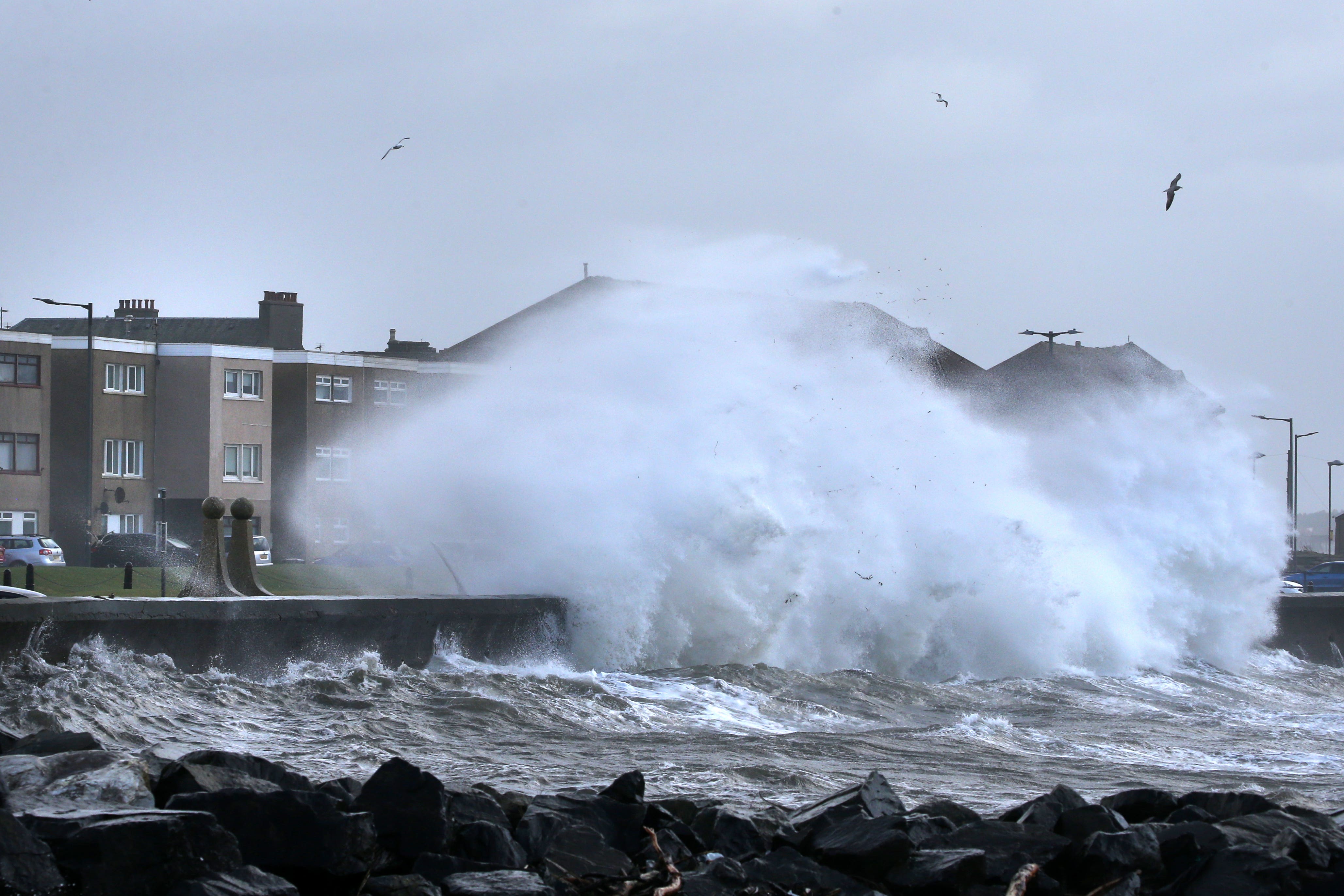
Met Office Chief Meteorologist Paul Gundersen said: “Storm Éowyn is a multi-hazard event, with snow likely for some, rain for many and strong winds for much of the UK. As a result, a number of weather warnings have been issued, with all parts of the UK covered by one warning at some point on Friday.
“While it will be widely very windy on Friday, with additional hazards from rain and snow, the strongest winds and most significant impacts are likely in Northern Ireland and central and southwestern parts of Scotland within the Red Warning areas, where winds could gust 80-90 mph quite widely for a time, and potentially up to 100 mph for exposed coasts in particular.”
How rare are red weather warnings?
Red weather warnings are the rarest kind, issued when the Met Office believes extreme weather is very likely to occur. The event will usually bring conditions that pose a danger to life, with those in the affected areas advised to take extreme caution.
Between 2011 and 2024, there were red warnings in place on just 19 days. During the same time, 521 days saw amber warnings while 1,922 had yellow. This means a red warning has only come on average one in every 128 days that saw other warnings.
For a red weather warning to be issued, it is measured by Met Office experts againsts its ‘impact matrix.’ This weighs how high the impact from the weather event will be with how likely it is to occur. On the rare occasion that they forecast the highest of both, a red warning is issued.
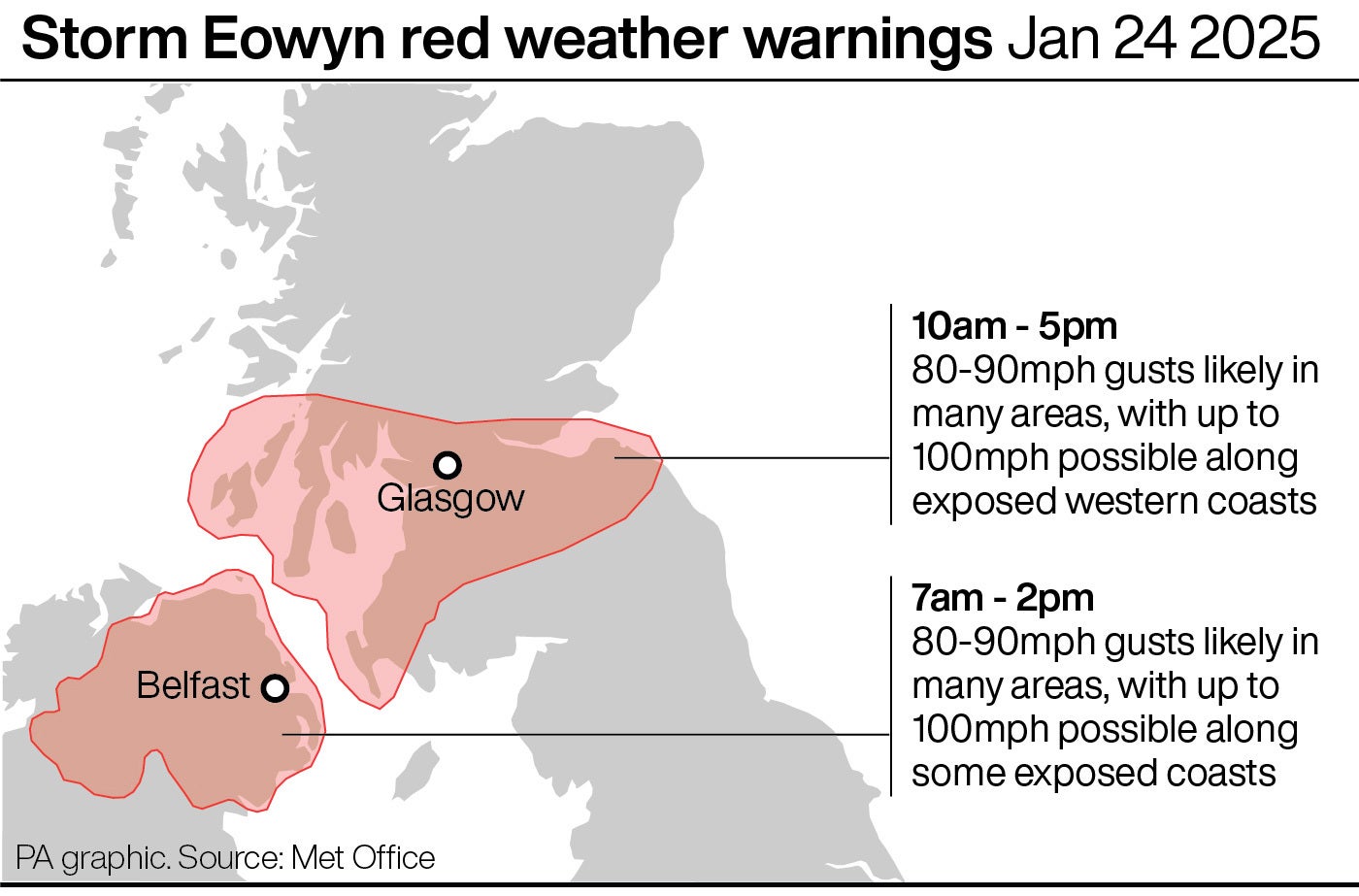
Met Office Chief Meteorologist Paul Gundersen said: “We reserve the issuing of Red Warnings for the most severe weather which represents a likely danger to life and severe disruption, and that is the case with Storm Éowyn.”
They are not only issued for wind, however, and in the past have been issued rain, snow and once even ‘severe heat.’ This was the case in July 2022 for the first and only time, during a severe heatwave which saw many areas in the UK declare draught and wildfires. On 19 July 2022, the highest-ever temperature in the UK was recored in Coningsby, Lincolnshire, at 40.3 degrees.
How dangerous is a red weather warning?
A red weather warning can cause “very dangerous conditions” for those in affected areas, meaning precautions should be taken. During Storm Éowyn, the Met Office recommends staying inside, not travelling, preparing for power cuts and tying down loose items outside the home if possible.
Mr Gundersen says: “While it will be widely very windy on Friday, with additional hazards from rain and snow, the strongest winds and most significant impacts are likely in Northern Ireland and central and southwestern parts of Scotland within the Red Warning areas, where winds could gust 80-90 mph quite widely for a time, and potentially up to 100 mph for exposed coasts in particular.”
The Met Office describes high impact from wind as:
- Widespread danger to life from flying debris.
- Widespread structural damage e.g. roofs blown off, mobile homes overturned, power lines brought down.
- Transport routes and travel services affected for a prolonged period. Long travel delays.
- Closure of main bridges, road and rail networks in many areas, and significant disruption to air and ferry transport.
- Widespread and prolonged disruption to power, and/or other utilities and services.
- Danger to life from large waves/beach material being thrown onto coastal route, sea fronts and coastal communities.
For the latest updates and information during Storm Éowyn, follow The Independent’s live coverage.
NewsBeat
Reform UK MPs call for ‘national debate’ on the death penalty after Southport killer sentenced

MPs in Nigel Farage’s Reform UK party have called for a debate on the death penalty after a killer who murdered three girls at a children’s dance class was sentenced.
Axel Rudakubana, 18, was given life with a minimum of 52 years in prison for the horrific attack which was described as a “pre-meditated attempt to commit indiscriminate mass murder”.
Judge Mr Justice Goose said he was unable to hand him a rare whole life order because he was only 17 at the time of the attack on 29 July last year. He turned 18 just nine days later.
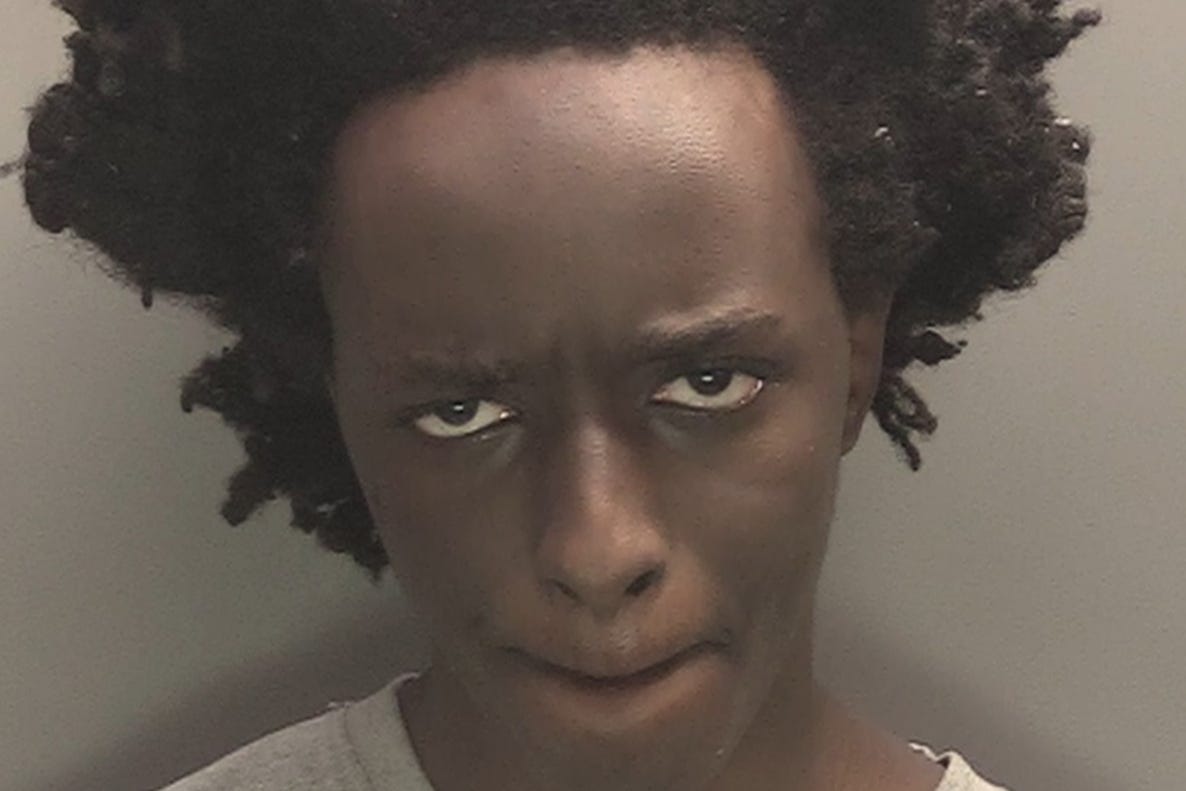
Southport’s Labour MP Patrick Hurley said the sentence was “not severe enough” and he had asked the Attorney General to review the sentence as “unduly lenient”.
The Attorney General’s Office said the case had been referred under the unduly lenient sentence scheme, which requires just one request in order for punishments handed out in court to be reconsidered.
Attorney General Lord Hermer and Solicitor General Lucy Rigby have 28 days to decide whether to refer the sentence to the Court of Appeal.
Meanwhile, Reform UK’s deputy leader Richard Tice has called for a “national debate” on the death penalty.
The MP told LBC: “I don’t think we should be afraid of having a national debate on important big issues like this. I think that many people in the country would like at least a debate.”
The last use of the death penalty in the UK took place in 1964.
Another Reform MP Rupert Lowe said it was “time for a national debate” on the use of capital punishment “in exceptional circumstances”.
A third, Lee Anderson, posted a picture of a noose on his X account, adding: “No apologies here. This is what is required!”
Party leader Mr Farage also called for the director of public prosecutions Stephen Parkinson to resign.
He said: “The British public needs to have confidence in the CPS and our police forces. Tens of millions of British citizens will find it incomprehensible how the CPS decided this was a non-terror incident and maintained that position. Those in positions of power have to be accountable and responsible for their actions.”
Prime minister Keir Starmer described the killer as a “vile offender” who “as the judge has stated… will likely never be released”. He added that the “thoughts of the entire nation” were with the families and all those affected by the “unimaginable horrors” that unfolded.
Lib Dem leader Ed Davey said: “I cannot imagine the eduring pain their [victims] families are still going through. No punishment will ever seem like enough.
“The government has an urgent duty to the families and our country to learn the lessons from what happened, and ensure a tragedy on this scale can never happen again.”
NewsBeat
Axel Rudakubana stopped by father week before Southport attack

Doorbell footage captured the moment Axel Rudakubana’s father ordered him out of a taxi the week before his murderous attacks in Southport.
Merseyside Police said Rudakubana had intended to travel to a school and his father stopped him over concerns he had about his son’s behviour.
A week later, the then-17-year-old murdered three girls and tried to murder eight more children and two adults at a Taylor Swift-themed dance class.
After admitting three murders and ten attempted murders, he was jailed for 52 years at Liverpool Crown Court.
Politics
Ben Habib warns Britain risks ‘wipeout’ if it doesn’t follow Donald Trump fundamentals: ‘Get on that bandwagon!’

Political commentator Ben Habib has warned that Britain risks being “wiped out” if it fails to follow America’s conservative reform agenda, as demonstrated by Donald Trump’s sweeping executive actions in his first days back in office.
Speaking on GBN America, Habib endorsed Trump’s extensive Day one policy changes, which included over 100 executive measures targeting immigration, climate policy and diversity programmes.
The former Brexit Party MEP cautioned that the UK faces an exodus of millionaires and expertise to America unless it adopts similar reforms.
“The world is a very fluid place for expertise and capital and it will go to where it finds its best home,” Habib said.
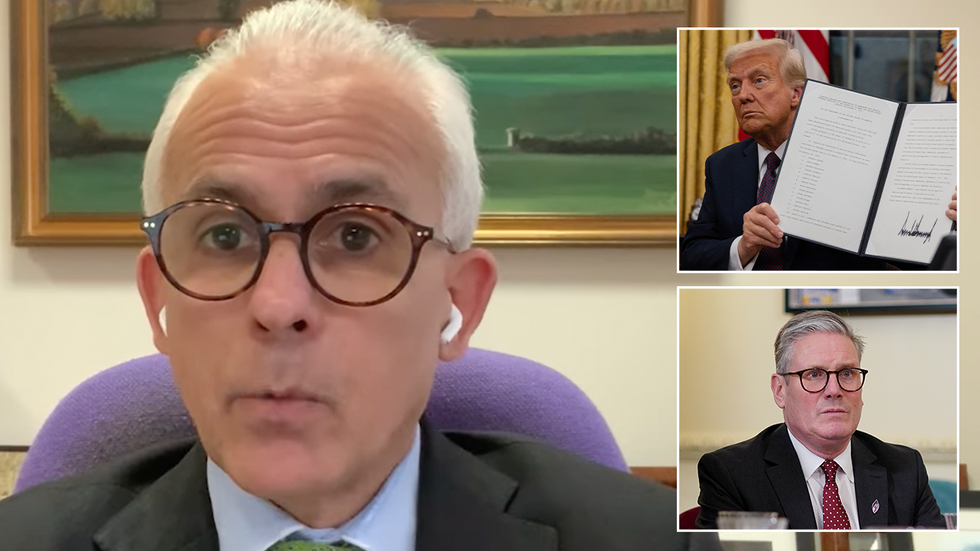
Ben Habib called on Starmer to follow in Trump’s footsteps
GBN AMERICA / PA / GB NEWS
Trump’s first day back in office saw him sign 45 executive orders, 11 memoranda, five proclamations and four sub-cabinet appointments, whilst revoking 78 Biden-era orders.
The flurry of activity began moments after his swearing-in at the US Capitol, before moving to a packed Capital One Arena where he signed orders dismantling key Biden policies.
LATEST DEVELOPMENTS
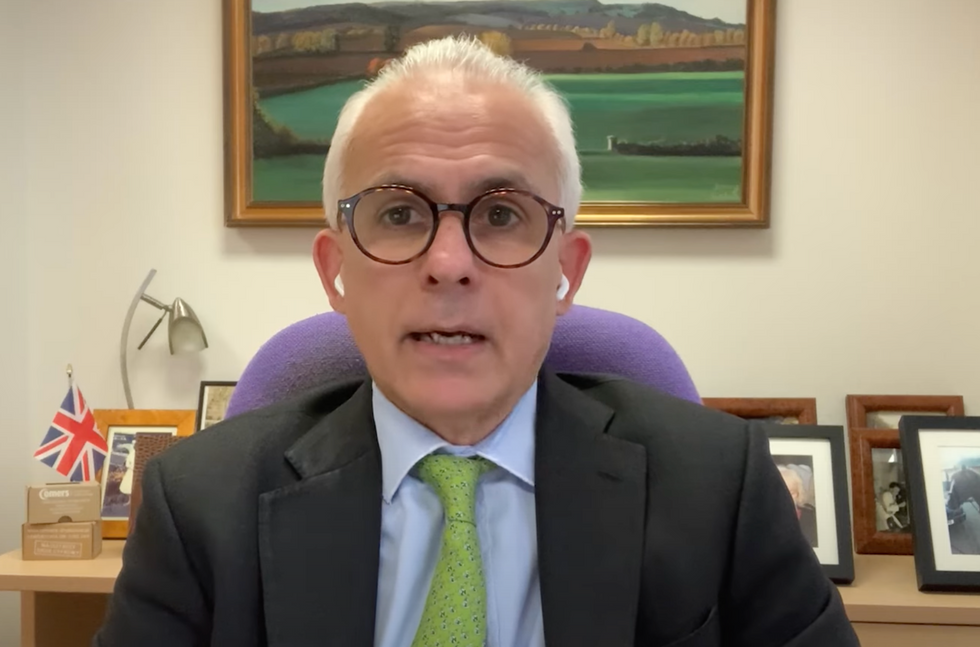
Ben Habib spoke on GBN America
GBN AMERICA
Major changes included declaring a national emergency at the southern border, ending federal diversity programmes, and withdrawing from the Paris Climate Agreement.
Trump also ordered the termination of electric vehicle mandates and established a new Department of Government Efficiency.
“With these actions, we will begin the complete restoration of America and the revolution of common sense,” Trump declared in his inaugural address.
The new president’s border initiatives included reinstating the “Remain in Mexico” policy and designating cartels as foreign terrorist organisations.
 Donald TrumpREUTERS
Donald TrumpREUTERS
His order on federal workers stripped job protections from career officials in policy roles, making it easier to dismiss them.
Trump also signed measures requiring government employees to return to in-person work and establishing new rules for security clearances.
In a symbolic move, he ordered the renaming of Alaska’s Denali back to Mount McKinley and proposed changing the Gulf of Mexico to the Gulf of America.
The president celebrated his actions by tossing signing pens to supporters at the Capital One Arena.
Habib urged Labour leader Keir Starmer to look across the Atlantic, warning that without similar reforms, Britain would see “an even faster growing US, an even more attractive US with a further exodus of millionaires from the UK”.
“We have driven it out of the UK already through a really bad set of policies, even before Labour won the election,” he told GBN America.
He argued that Trump “is showing that what we have been doing for the last 27 years, the liberal, global approach to governance is not the way to run a country”.
“He is showing us the way to do it and we better get on that bandwagon or we will be wiped out,” Habib concluded.
NewsBeat
The missed chances to stop Southport killer Axel Rudakubana

A public inquiry will be held into the murders of three girls at a Taylor Swift-themed dance class in Southport by 18-year-old Axel Rudakubana “that can get to the truth about what happened and what needs to change”.
The announcement came after it emerged Rudakubana was referred to an anti-extremism programme three times before he carried out the murders, and endangered his former teachers and peers.
Home secretary Yvette Cooper confirmed the 18-year-old had “contact with a range of different state agencies throughout his teenage years” before carrying out his “meticulously planned rampage”.
Ms Cooper said in a statement: “He was referred three times to the Prevent programme between December 2019 and April 2021 aged 13 and 14.
“He also had contact with the police, the courts, the Youth Justice system, social services and mental health services.
“Yet between them, those agencies failed to identify the terrible risk and danger to others that he posed.”

Announcing the inquiry, Ms Cooper continued: “Although, in line with CPS advice to preserve the integrity of the prosecution, we were constrained in what we were able to say at the time, the Home Office commissioned an urgent Prevent Learning Review during the summer into the three referrals that took place and why they were closed.
“We will publish further details this week, alongside new reforms to the Prevent programme.
“But we also need more independent answers on both Prevent and all the other agencies that came into contact with this extremely violent teenager as well as answers on how he came to be so dangerous, including through a public inquiry that can get to the truth about what happened and what needs to change.”
The 18-year-old pleaded guilty to the attack on the first day of his trial. The teenager from Banks, Lancashire, admitted 16 offences, including three counts of murder and 10 counts of attempted murder at Liverpool Crown Court on Monday.
Sir Keir Stamer said there are “grave questions” to answer about how the state failed the Southport murder victims. The prime minister welcomed the news that Rudakubana pleaded guilty and pledged to “leave no stone unturned” in investigating why the attack had not been prevented.
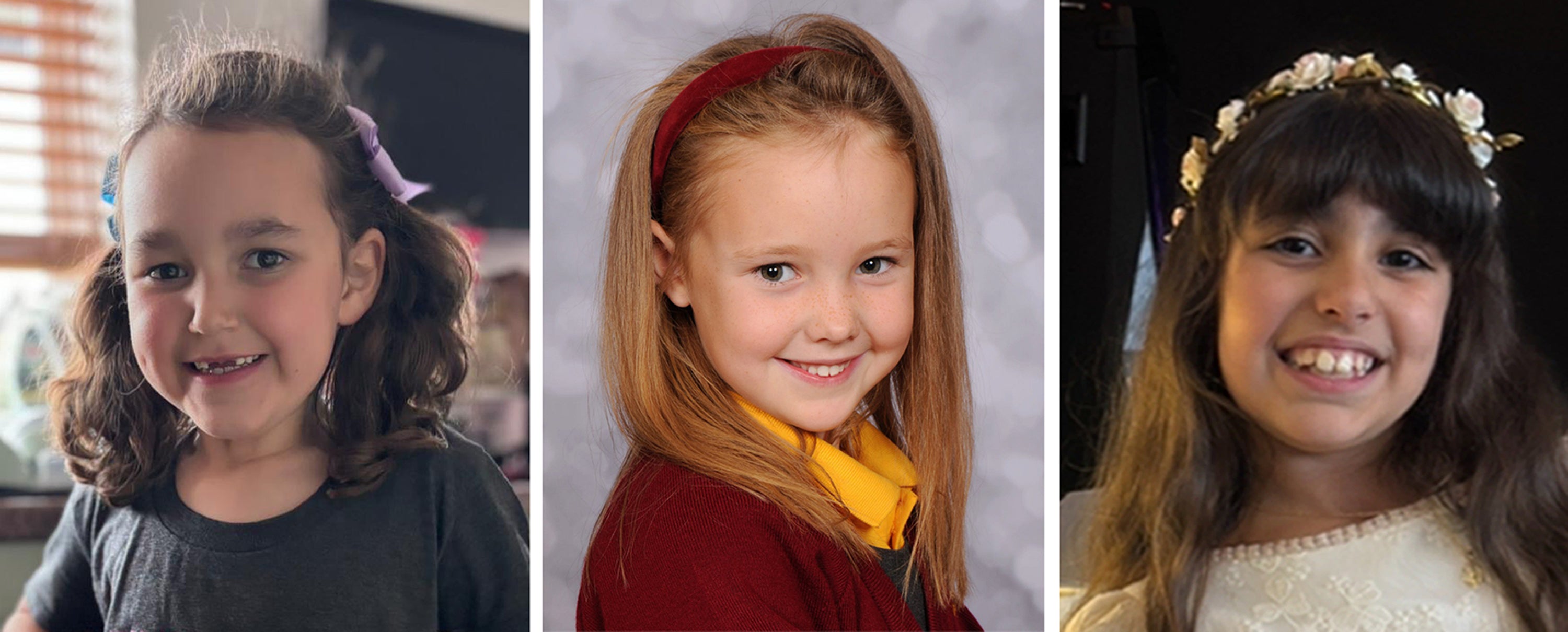
Alice da Silva Aguiar, nine; Bebe King, six; and Elsie Dot Stancombe, seven; died following the attack at the dance class in The Hart Space on a small business park in the seaside town shortly before midday on 29 July.
The defendant admitted their murders as well as the attempted murders of eight other children, who cannot be named for legal reasons, class instructor Leanne Lucas and businessman John Hayes.
A week before launching a knife attack on the dance class, Rudakubana had attempted to travel to his former school as pupils broke up for the summer holidays.
The 18-year-old booked a taxi to go to Range High School in Formby on 22 July, The Independent understands, seven days before he would travel by taxi to The Hart Space in Southport.
On both occasions, he is said to have been wearing the same outfit – a green hooded sweatshirt with the hood pulled up, despite the summer temperatures, and a surgical mask.
Ten minutes after his taxi was booked, at 12.30pm, pupils were due to leave the school premises on their last day of term, it is understood.
On 22 July, however, his father followed him out of the house and pleaded with the taxi driver not to take him.
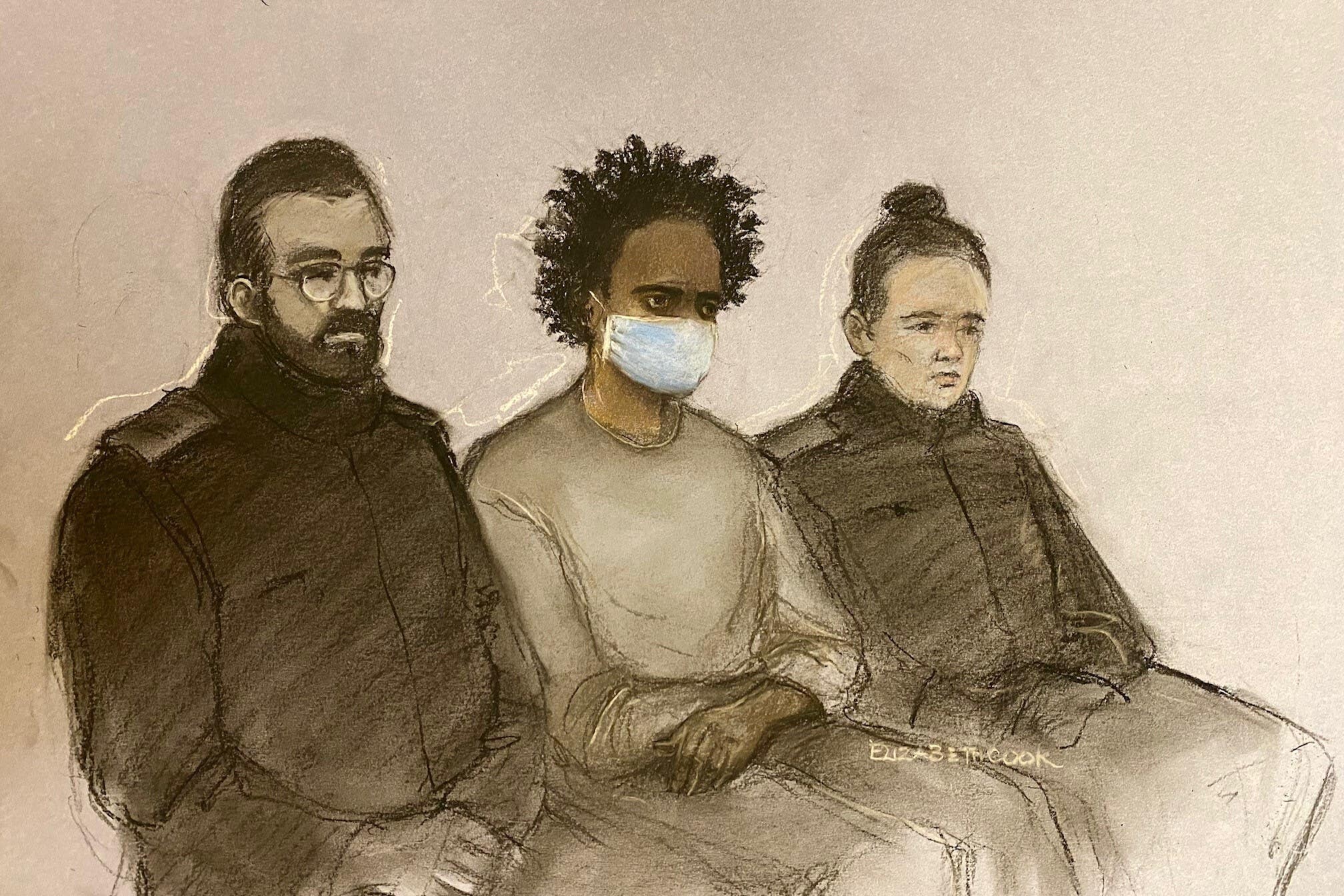
Rudakubana was permanently excluded from the secondary school over claims he was carrying a knife and later returned to attack someone with a hockey stick, it is understood.
Aged 17 at the time of the attack, Rudakubana was born in Cardiff to Rwandan parents and had moved with his family to the village of Banks in Lancashire about a decade ago.
Neighbours described the family as unremarkable, but it can now be reported that teachers had concerns about his behaviour from when he entered Year 9.
Rudakubana was excluded in around 2019 after telling Childline that he was being racially bullied and was bringing a knife into school to protect himself, it is understood.
It is not known if he was being bullied or if he ever brought a weapon into the school while he was a pupil.
After his exclusion, he returned to the school and assaulted someone with a hockey stick, the intended target being a former bully or someone he had a grievance with, it is understood. Rudakubana then attended two specialist schools, The Acorns School in Lancashire and Presfield High School & Specialist College in Southport, and teachers were concerned about his behaviour. His in-person attendance at Presfield was less than 1 per cent.
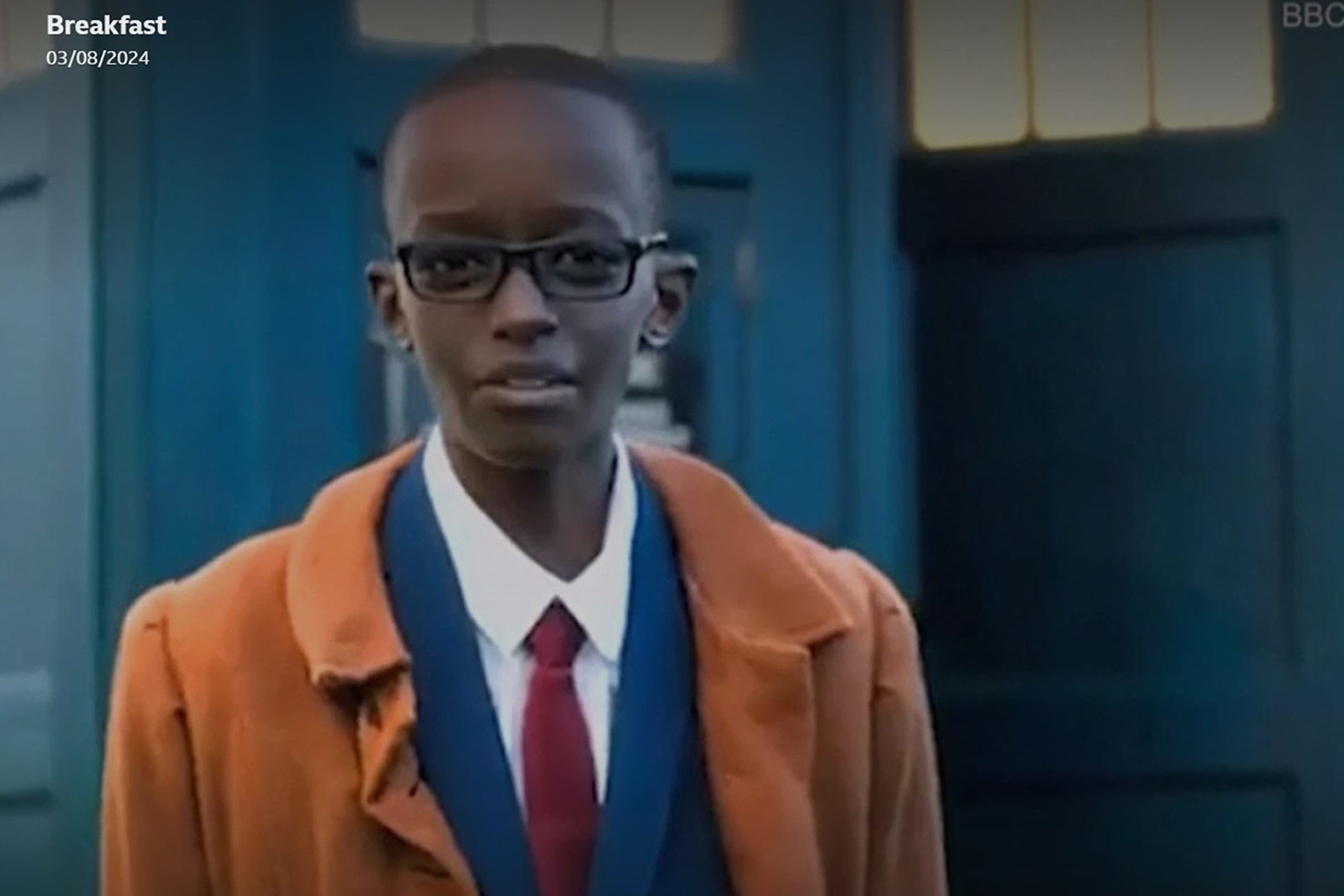
In a statement on Monday, prime minister Keir Starmer said: “The news that the vile and sick Southport killer will be convicted is welcome.
“It is also a moment of trauma for the nation, and there are grave questions to answer as to how the state failed in its ultimate duty to protect these young girls.
“Britain will rightly demand answers, and we will leave no stone unturned in that pursuit.”
Tory leader Kemi Badenoch said ministers must give a “complete account” of who “knew what and when” about Rudakubana, as she piled pressure on the government.
Mr Justice Goose said Rudakubana will be sentenced on Thursday.
He is not expected to receive a whole life order because he was 17 at the time of the murders – the measures can normally only be imposed on criminals aged 21 or over, and are usually only considered for those aged 18 to 20 in exceptional circumstances.
Rudakubana also admitted possessing a knife on the date of the attack, production of a biological toxin, ricin, on or before 29 July and possession of information likely to be useful to a person committing or preparing to commit an act of terrorism.
The terrorism offence relates to a PDF file entitled Military Studies In The Jihad Against The Tyrants, The Al Qaeda Training Manual which he is said to have possessed between 29 August 2021 and 30 July 2024.
The ricin, a deadly poison, and the document were found during searches of the home in Old School Close which he shared with his parents, who are originally from Rwanda.
NewsBeat
Keely Hodgkinson: Olympic 800m gold medallist voted 2024 Sunday Times Sportswoman of the Year

Olympic 800m gold medallist Keely Hodgkinson has been voted the 2024 Sunday Times Sportswoman of the Year.
The 22-year-old ended her wait for a global title with victory at the Olympic Games in Paris last summer and won BBC Sports Personality of the Year in December 2024.
Hodgkinson also retained her European 800m title and became the sixth-fastest woman of all time when she improved her British record to one minute 54.61 seconds at the London Diamond League.
Hodgkinson follows last year’s winner, England goalkeeper Mary Earps, athlete Eilish McColgan, and tennis player Emma Raducanu, who won in 2021.
The shortlist for the 2024 award was dominated by Olympic medal winners with Hodgkinson scooping it ahead of 1500m runner Georgia Bell, showjumper Laura Collett, cyclist Emma Finucane, heptathlete Katarina Johnson-Thompson, trampoline gymnast Bryony Page, shooter Amber Rutter and Paralympic cycling great Sarah Storey.
Elsewhere, diver Andrea Spendolini-Sirieix was named the newspaper’s Young Sportswoman of the Year after she won bronze in Paris.
Storey picked up the Disability Sportswoman of the Year after she added two more golds to her medal collection at the Paralympic Games.
Rowers Lauren Henry, Lola Anderson, Georgina Brayshaw and Hannah Scott won the Team of the Year for their dramatic victory in the women’s quadruple sculls at Paris 2024.
Ultra runner Jasmin Paris won the Helen Rollason Award for Inspiration, while retired PE teacher and cycling enthusiast Val French won the Grassroots Sportswoman of the Year.
BBC radio presenter Eleanor Oldroyd’s contribution to sports broadcasting was also recognised with a special Editor’s Choice Award.
Politics
Donald Trump ‘personally asked Boris Johnson’ to witness his swearing in while Nigel Farage ‘did not make the cut’

Donald Trump personally asked Boris Johnson to witness his swearing in as President, and has a “good working relationship” with him, says former Tory Security minister Tom Tugendhat.
Tugendhat, who was in Washington DC last week ahead of the President’s inauguration, said Trump has personally asked Johnson to be in the rotunda on Capitol Hill to witness personally his swearing in.
Earlier this week Nigel Farage, the leader of Reform UK, told GB News that he had not “made the cut” and been invited to sit in the Rotunda audience.
Tugendhat told today’s Chopper’s Political Podcast that he had been told by “members of the administration” that it was “a personal decision by the President” to invite Johnson to be there.

Donald Trump personally asked Boris Johnson to witness his swearing in as President, and has a “good working relationship” with him, says former Tory Security minister Tom Tugendhat
Getty
He said: “It is very clear to me that that was a personal choice by the president choosing people who he was close to, to be around him on the day.”
He added: “It wasn’t a large list. There’s not that many people can fit in there. And the President went through the list personally and removed some names and added [others].”
Tugendhat added that Johnson – who has in the past intimated he wants a way back into politics – “has had a very good working relationship with Donald Trump.
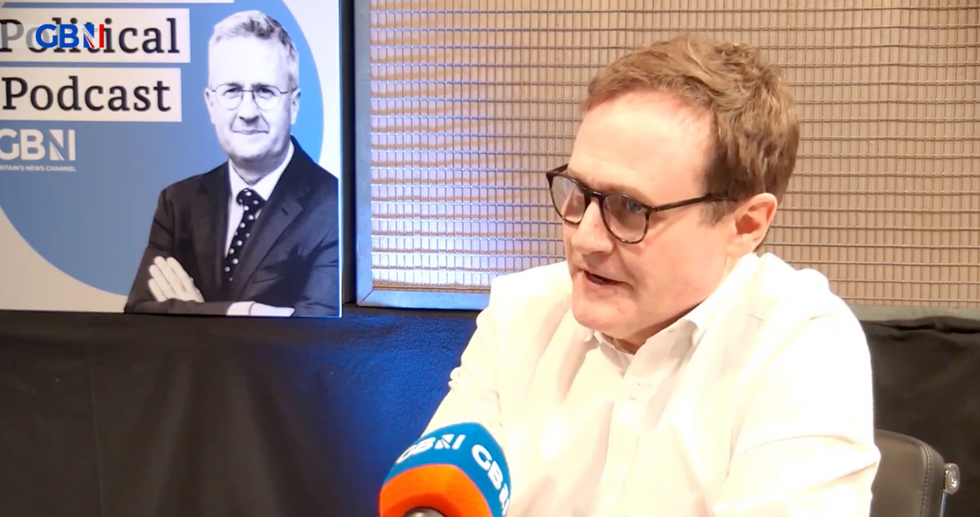
Tom Tugendhat, who was in Washington DC last week ahead of the President’s inauguration, said Trump has personally asked Johnson to be in the rotunda on Capitol Hill to witness personally his swearing in
GB News
“He’s got a lot of friends in Washington.
“He’s got a voice that reaches parts that other politicians don’t reach.”
Listen or watch Chopper’s Political Podcast on Apple Podcasts, Spotify or GB News’ YouTube channel.
NewsBeat
Moment ten-pint drink-driver confronted after leaving victim amputee | News


Bodycam footage shows police confronting a drink driver after he seriously injured two people in a collision near Bristol Airport, leaving one victim needing her arm amputated at the elbow.
Another victim suffered significant internal bleeding and bruising.
Leigh Brean, 43, of Lawrence Road, Wrington, was jailed for three years and two months and was told he was not allowed to drive for 11 years and seven months.
In five hours, he had drunk 10 pints before getting behind the wheel of the car.
He pleaded guilty to causing serious injury by dangerous driving and for failing to provide a specimen.
NewsBeat
‘My daughter’s bones were scattered on the ground’

Special correspondent
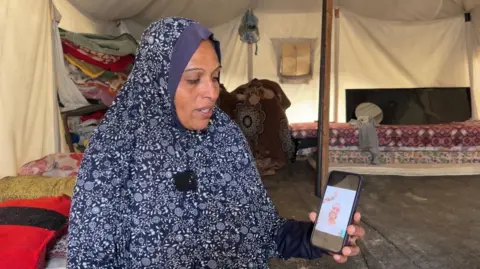 BBC
BBCEverything gets mixed up together. The child’s multi-coloured backpack. A running shoe. A steel pot perforated by shrapnel. Bits of beds, chairs, cookers, lampshades; the glass of broken windows, mirrors, drinking glasses. Scraps of clothing.
These last shredded, dust covered items can be markers. Often they belong to the dead lying near the surface of the rubble.
“Since the Israeli occupation forces withdrew from Rafah, we have had about 150 calls from civilians about the presence of their relatives’ bodies under houses,” says Haitham al-Homs, director of Emergency and Ambulance Services for the Civil Defence agency in Rafah, at the southernmost end of the Gaza Strip.
The Palestinian health authorities estimate that 10,000 people are missing. Where there is no obvious marker like clothing at the surface, the search teams rely on information from relatives and neighbours, or they follow the smell of death that radiates from the ruins.
WARNING: This story contains distressing content
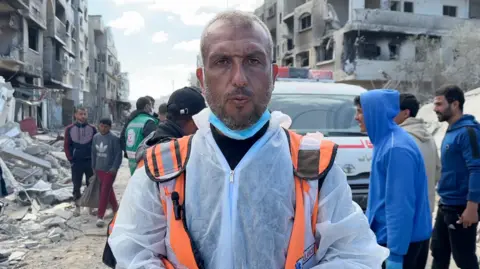
The Israeli government has banned the BBC and other international news organisations from entering Gaza and reporting independently. We depend on trusted local journalists to record the experiences of people like those who are searching for the missing.
At the end of every day, Mr Homs updates the list of those found. His team excavates the rubble with care, aware that they are searching for fragments of broken humanity. Often what is recovered is no more than a pile of bones. Israel’s high explosive bombs blasted and mangled into pieces many of the dead. The bones and scraps of clothing are placed in white body bags upon which Mr Homs writes the Arabic word “majhoul”. It means “unidentified”.
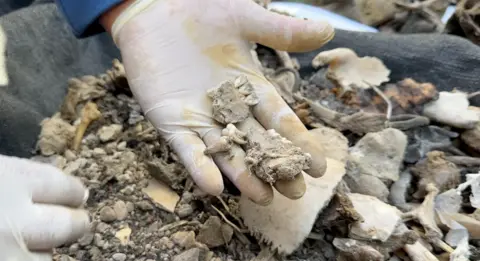
A resident of Rafah, Osama Saleh, went back to his home after the ceasefire and found a skeleton inside. The skull was fractured. Mr Saleh reckons the body lay there for four to five months. “We are humans with feeling…I can’t convey to you how miserable the tragedy is,” he says.
To be surrounded every day by the smell of decomposing bodies is a deeply unsettling experience, as those who have witnessed the aftermath of mass death will often testify.

“The bodies are terrifying. We are seeing terror,” Osama Saleh says. “I swear it is a painful feeling, I have cried.”
Families have also been arriving at hospitals to search for remains. In the courtyard of the European Hospital in southern Gaza, collections of bones and clothing are spread out on body bags.
Abdul Salam al-Mughayer, 19, from Rafah, went missing in the Shaboura area; according to his uncle, Zaki, it was a place you didn’t come back from if you went there during the war. “So, we didn’t go to look for him there for that reason. We wouldn’t have returned.”
Zaki believes a set of bones and clothes in front of him belong to the missing Abdul Salam. He is standing with a hospital worker, Jihad Abu Khreis, waiting for Abdul Salam’s brother to arrive.
“It’s 99% certain the body is his,” Mr Abu Khreis says, “but now we need the final confirmation from his brother, the closest people to him, to make sure that the trousers and shoes are his.”
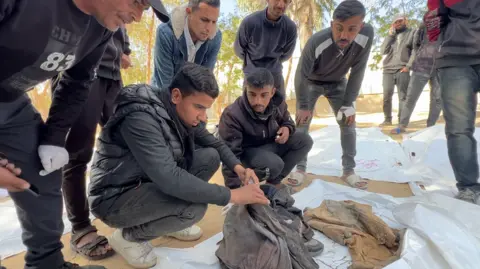
Soon after the brother arrived from the tented refugee camp of al-Mawasi, also in southern Gaza. He had a photograph of Abdul Salam on his phone. There was a photo of his running shoes.
He knelt before the body bag and pulled back the cover. He touched the skull, the clothes. He saw the shoes. There were tears in his eyes. The identification was complete.
Another family moved along the row of body bags. There was a grandmother, her son, an adult sister, and a toddler. The child was kept at the back of the group while the elderly woman and her son looked under the cover of the body bag. They stared for a few seconds and then embraced each other in grief.
After this, the family, helped by hospital workers, carried away the remains. They were weeping, but nobody cried aloud.
 Handout
HandoutAya al-Dabeh was 13 years old and was living with her family and hundreds of other refugees at a school in Tal al-Hawa, in Gaza City in the north. She was one of nine children.
One day at the start of the war Aya went to go to the bathroom upstairs at the school and – her family says – she was shot in the chest by an Israeli sniper. The Israel Defense Forces say they do not target civilians and blame Hamas for attacking from civilian areas. During the war the UN Human Rights Office said that that there has been “intense shooting by Israeli forces in densely populated areas resulting in apparently unlawful killings, including of unarmed bystanders.”
The family buried Aya beside the school, and her mother Lina al- Dabah, 43, wrapped her in a blanket “to protect her from the rain and the sun” in case the grave was disturbed and exposed to the elements.
When the Israeli military took over the school Lina fled south. She went with four other children – two daughters and two sons – to reunite with her husband who’d gone earlier with the couple’s other children. Lina had no option but to leave her daughter where she lay, hoping to come back and recover the remains for a proper burial once peace came.
“Aya was a very kind girl, and everyone loved her. She used to love everyone, her teachers and her studies, and she was very good at school. She wished well for everyone,” Lina says. When the ceasefire came Lina asked relatives still living in the north to check up on Aya’s grave. The news was devastating.
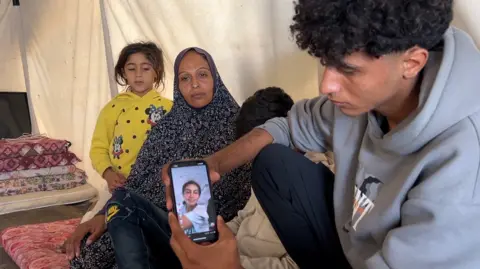
“They informed us that her head was in one place, her legs were in another, while her ribs were somewhere else. The one who went to visit her was shocked and sent us the pictures,” she says.
“When I saw her, I couldn’t understand how my daughter was taken out of her grave, and how did the dogs eat her? I can’t control my nerves.”
The relatives have collected the bones and soon Lina and her family will travel north to carry Aya’s remains to a proper grave. For Lina, there is grief with no end, and a question that has no answer – the same question that sits with so many parents who lost children in Gaza. What could they have done differently, the circumstances of the war being what they were?
“I couldn’t take her from where she was buried,” says Lina. Then she asks: “Where could I have taken her?”
With additional reporting by Malak Hassouneh, Alice Doyard, Adam Campbell.
NewsBeat
Cold weather payment: Over 1m households set for £25 – postcode checker and eligibility

More than a million cold weather payments have been triggered after the January cold snap, with some households set to receive up to £50 to go towards the cost of heating their home.
To help support people during freezing weather, the Department for Work and Pensions (DWP) runs the cold weather payment scheme for qualifying households. This is a one-off payment of £25 that is triggered for every seven-day period where the temperature in your area is at or below zero degrees.
In the week ending 17 January, there were 1.2 million of these payments triggered, a dramatic increase from 161,000 the week before. This means millions of households are set to get a £25 payment soon – with some will get even more as they felt the freezing weather for over two weeks.
Cold weather payments have been triggered for 793 postcode areas so far this year, most for the first time in January. These areas span across England and Wales, with most regions affected. Only the East of England, South West and London didn’t see the freezing weather last long enough to trigger any payments, for the most part.
Here is a map of all the latest areas to qualify:
Am I eligible for a cold weather payment?
You are eligible for the payment if you receive any of the following:
- Pension Credit
- Income Support
- Income-based Jobseeker’s Allowance (JSA)
- Income-related Employment and Support Allowance (ESA)
- Universal Credit
- Support for Mortgage Interest
You must also live in an area that has experienced seven days of zero or sub-zero temperatures.
The DWP uses its own equipment to measure temperatures across all UK postcodes. If you disagree with the judgement, it is possible to appeal directly to the department.
You do not qualify for this scheme if you live in Scotland, as the Scottish government has recently replaced the scheme with Winter Heating Payments.
When will I get the payment?
If you’re eligible, you will get these payments automatically. They should arrive in the same bank account you receive benefit payments, within 14 working days of the cold period.
If you believe you are eligible but have not received the payments, you should contact the DWP.
Full list of postcodes eligible for cold weather payment
Here are all the postcode areas where cold weather payments have been triggered since November:
Politics
Rupert Lowe skewers human rights lawyer over outrageous illegal immigrant demand: ‘Pork barrelling a living!’

Reform UK MP Rupert Lowe has strongly rejected calls for an amnesty for illegal migrants in Britain, following suggestions by human rights lawyer Ivon Sampson.
Speaking on GB News, Sampson argued that offering an amnesty would enable better tracking of migrants, stating: “The only sensible thing to do is to offer an amnesty – then we have a sensible policy of ensuring those people who come in are tracked.”
Lowe hit back, saying: “These human rights lawyers pork barrel a living on the back of all this Tony Blair legislation which has created our problem.”
He called for tougher measures, suggesting migrants should be placed in “uncomfortable, untented camps” on remote islands.
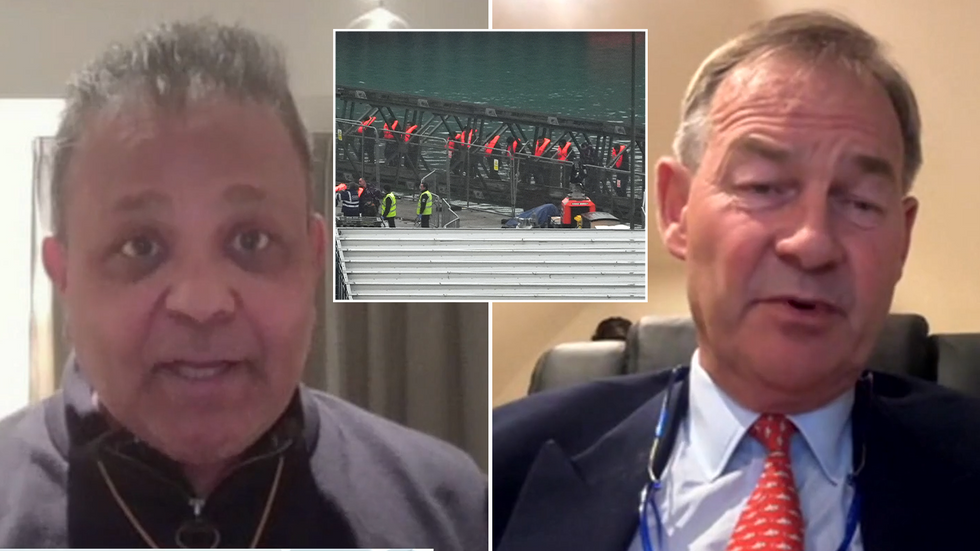
Rupert Lowe said human rights lawyers like Sampson are ‘pork barrelling a living’
GB NEWS
The clash comes as new figures reveal up to one in 12 people living in London are illegal migrants.
A previously confidential report commissioned by Thames Water estimates between 390,355 and 585,533 illegal migrants are living in the capital, with a median figure of 487,944.
LATEST DEVELOPMENTS
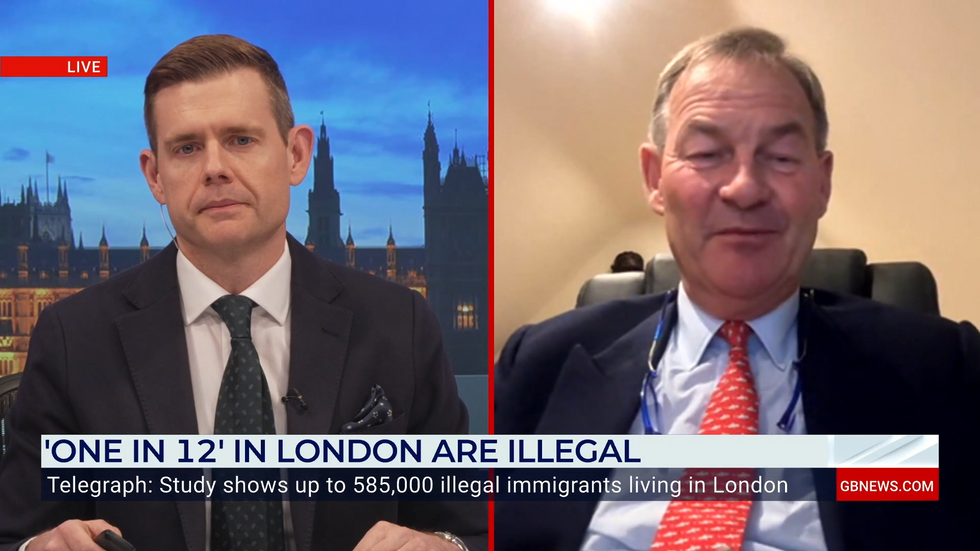
Reform’s Rupert Lowe joined Matt Goodwin on GB News
GB NEWS
The study, conducted by Edge Analytics and Leeds University experts, suggests most illegal migrants initially arrived on work, study or visitor visas before overstaying.
The research indicates around one million illegal migrants could be living in the UK, with 60 per cent concentrated in London.
The findings were obtained through Freedom of Information requests to Thames Water, who commissioned the study to better understand their “hidden” service users.
Reform UK chairman Zia Yusuf warned the situation represents “not just a national emergency, it’s a national security emergency.”
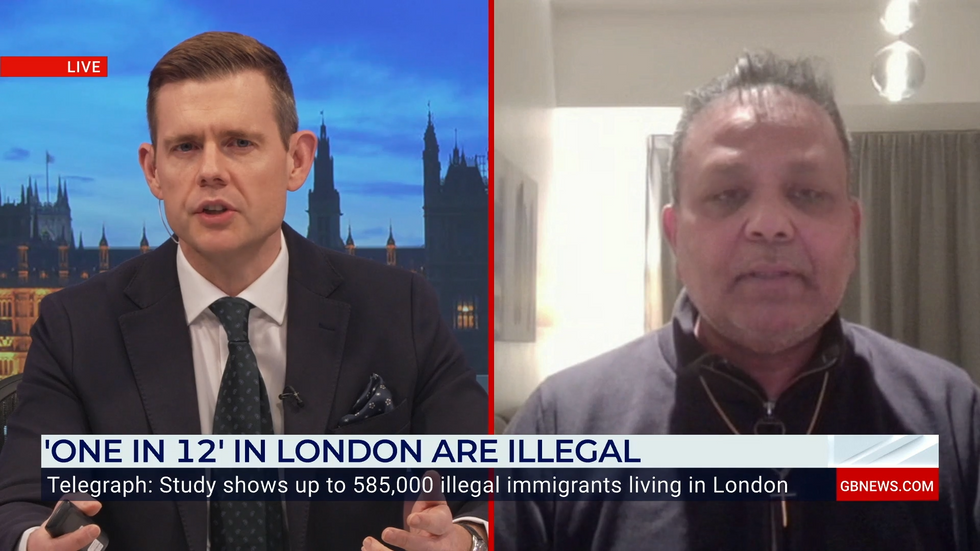
The human rights lawyer argued in favour of giving all illegal migrants amnesty
GB NEWS
He expressed particular concern about demographics, noting: “90 per cent of the people crossing the Channel are men.”
“The number of military age males making that journey legally surpasses the number of available soldiers, both standing and territorial,” Yusuf told GB News.
Deputy Reform UK leader Richard Tice added: “One in 12 people in London are here illegally, probably working illegally using taxpayer-funded public infrastructure and services. It is totally unacceptable.”
The Home Office reports having removed 16,400 illegal migrants in the past six months, the highest figure in half a decade.
More than 1,000 people have already crossed the Channel in small boats during the first 23 days of 2025.
This follows 38,816 Channel crossings in 2024, the second highest total on record.
A Home Office spokesman said: “This Government is strengthening global partnerships and rooting out the criminal gangs who profit from small boat crossings which threaten lives.”
Shadow Home Secretary Chris Philp called the figures “deeply alarming” and urged the Labour government to “urgently start deporting far more illegal immigrants.”
-

 Fashion8 years ago
Fashion8 years agoThese ’90s fashion trends are making a comeback in 2025
-

 Entertainment8 years ago
Entertainment8 years agoThe Season 9 ‘ Game of Thrones’ is here.
-

 Fashion8 years ago
Fashion8 years ago9 spring/summer 2025 fashion trends to know for next season
-

 Entertainment8 years ago
Entertainment8 years agoThe old and New Edition cast comes together to perform You’re Not My Kind of Girl.
-

 Sports8 years ago
Sports8 years agoEthical Hacker: “I’ll Show You Why Google Has Just Shut Down Their Quantum Chip”
-
Business8 years ago
Uber and Lyft are finally available in all of New York State
-
Entertainment8 years ago
Disney’s live-action Aladdin finally finds its stars
-
Sports8 years ago
Steph Curry finally got the contract he deserves from the Warriors
-
Entertainment8 years ago
Mod turns ‘Counter-Strike’ into a ‘Tekken’ clone with fighting chickens
-
Fashion8 years ago
Your comprehensive guide to this fall’s biggest trends



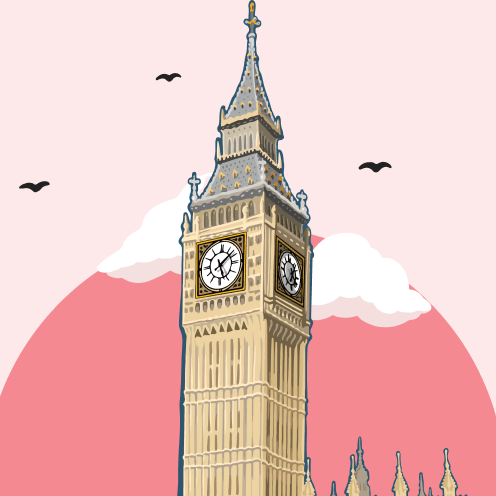





You must be logged in to post a comment Login